By Rob Sample – MAY 25, 2017
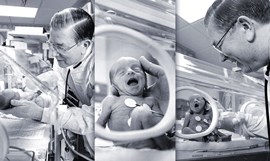 The dedication and legacy of a prodigious pro-life hero
The dedication and legacy of a prodigious pro-life hero
When five-year-old Lilliana Dennis was born in February 2011 in Indianapolis, doctors informed her mom and dad that she suffered from a rare genetic condition that was “incompatible with life.” As Lilliana approaches her sixth birthday, she continues to defy the odds and prove conventional medical wisdom both wrong and wrongheaded.
Lilliana has Trisomy 18, also known as Edwards syndrome. As with Down syndrome, such babies are born with an extra chromosome, resulting in heart defects, respiratory problems, and finger and toe abnormalities. Most die before their first birthday, the doctors said, and there was little the Dennises could do to stop that eventual outcome.
Fortunately, the Dennises did some of their own research, which contradicted what they had been told. In fact, one child graduated from college and lived to the age of 42. The Dennises also befriended Dr. Paul Byrne, a retired neonatologist, longtime pro-life activist, and founder of the Life Guardian Foundation (LifeGuardianFoundation.org). He recommended heart surgery for Lilliana, along with other life-saving measures, and although the road has been difficult, Lilliana’s prognosis continues to improve.
Dr. Byrne is no stranger to death-and-dying issues and the challenges posed by both preemies and babies with congenital illnesses. In 1963, he established the neonatal intensive care unit at Cardinal Glennon Children’s Hospital in St. Louis. Though he no longer makes hospital rounds, he stays very, very busy working on behalf of the preborn, sick newborns, the disabled, the elderly, and people with illnesses deemed “terminal.”
“Not only do we have a culture of death in our society—it is a System of Death,” Dr. Byrne says. “We have to work hard to protect life from its beginning until true death. That’s why Life Guardian Foundation was founded.”
“I retired a few years ago after practicing medicine for 55 years,” Dr. Byrne adds. “Yet, instead of a retirement party, I asked my family to have a ‘redirection party.’ My work has not stopped—in fact, I’m busier than ever! People have a way of finding out that I can help them in the cause for life and in their own difficult situations.”
Small beginnings
To get a sense of how Dr. Byrne’s passion for saving lives all began, it’s helpful to go back to the very beginning, when he was a young doctor practicing at Cardinal Glennon Children’s Hospital in the mid- 1960s. There, Dr. Byrne established the hospital’s very first special care nursery for at-risk infants.
“Back then, there were no treatments for preemies and low-birthweight babies, the kinds of things we take for granted today,” he recalls. “I went to the administrator at Cardinal Glennon with the idea of creating a center where we could find ways to treat these babies. She said, ‘OK, let’s try it for a year.’”
After that first year, Dr. Byrne’s efforts had saved the lives of 30 babies. “How?” you might ask. For starters, he partnered with engineers working nearby on the space pro-gram. They had developed a plastic cuff to fit around the fingers of astronauts, enabling their blood pressure to be monitored during space missions. Together, they developed a spinoff that fit around the arm of a tiny baby: Before this invention, there was no way to monitor a baby’s blood pressure.
Dr. Byrne and his team also pioneered new techniques for feeding these babies intravenously as well as specially designed ventilators to augment their respiratory function. All were instrumental in helping such infants survive. Since preemies are so small, new, highly sensitive measurement protocols were also necessary to track their health.
“For instance, premature infants have very small total quantities of blood,” Dr. Byrne notes. “That required development of micro techniques to analyze blood for indicators of health or disease. These micro-techniques that were developed for sick babies are used for everyone. It was exciting for me to be able to participate in the development of what was then a brand-new field.”
Signs of life
It was also heartening for him to witness babies who had been deemed hopeless develop into healthy children and adults. The birth of Joseph in 1975—at a mere 24 weeks’ gestation— was one such miracle. “He had a flat electroencephalogram or EEG—in other words, no brainwaves,” Dr. Byrne recalls.
The EEG is a common method of measuring brain activity at any age. The flat EEG of Joseph was interpreted as “consistent with cerebral death.” “Nonetheless, Joseph went on to be a straight-A student in school, build a brilliant career, and he’s now married and the father of three kids.”
While considered breakthroughs in their day, many of these developments are now commonplace in both neonatal intensive care units and medical care as a whole. Plastic cuffs are routinely used to measure blood pressure of patients.
“My medical philosophy is that the best doctors are the ones who work the hardest on the people who are the sickest,” he says. “What you try to accomplish for those sickest people first will ultimately have a beneficial impact on the rest of humanity.”
Darker trends
During the early 1970s, Dr. Byrne witnessed a trend he found troubling: the increased acceptance of brainwave cessation as a legally acceptable marker of death. This occurred even before abortion became legally available in most states, and it owed in part to new ways to artificially resuscitate patients to keep a person’s heart beating with circulation and respiration. It also followed the world’s first heart transplant in 1967, after which organ transplants became common practice in a short amount of time.
“The push to accept ‘brain death’ has a lot do with the concurrent push for viable organs for transplants,” says Dr. Byrne. He noted that, following that first heart transplant, the medical community began lobbying elected officials for new laws that first codified “brain death” in the US.
This had practical reasons. Dr. Byrne points out that to transplant a heart or a liver, the donor’s heart, circulation and respiratory processes must be kept functioning for healthy vital organs to be removed. Organs from a cadaver are useless, he notes, because organs begin to decompose immediately after those functions cease.
“Now, when someone suffers a head injury or is deeply unconscious, there is a shift of emphasis from helping that patient to harvesting his or her organs for transplantation,” he says. The fact that viable organs are very valuable to the organ transplant industry can add a monetary incentive to the push to declare patients legally dead.
Forty-seven US states have passed the Uniform Anatomical Gift Act (UAGA) that presumes everyone is an organ donor. This is in addition to those who have willingly registered as organ donors on their drivers’ licenses. This often creates a conflict, when the same individuals have also filed advance DNR (do not resuscitate) directives. In such situations, that previous DNR order will be overruled and the patient will be resuscitated in order for their vital organs to be usable for transplantation.
It could happen . . . to anyone
This isn’t all just academic. In 2007, 19-year-old Gregory Jacobs sustained a severe head injury while skiing and died at a Pennsylvania hospital less than a week later. In a lawsuit, his parents maintained that their son “experienced neither a cessation of cardiac activity nor a cessation of brain activities when surgeons began the procedures for removing his vital organs.”
The Jacobs case was the subject of a CBS News report, and the elder Jacobses ultimately won a $1.2 million settlement in 2012. More recent is the case of the now-16-year-old Jahi McMath, who had severe sleep apnea and on which Dr. Byrne is a medical advisor.
Jahi underwent a tonsillectomy at a California hospital, which aimed to improve her ability to sleep at night. She later hemorrhaged and went into cardiac arrest. Physicians declared her to be “brain dead” and ordered the removal of life-support systems.
Jahi’s mom, Latasha Winkfield, disagreed and filed a lawsuit seeking to keep her on life support. A death certificate was issued for Jahi in California before she could be moved to a New Jersey hospital. She later was moved to an apartment with her mom, where she continues to live on life support.
Incidentally, Dr. Byrne was instrumental in getting a new law passed in that state, which gives parents or caregivers the ability to object conscientiously to such orders from a physician or hospital. A similar regulation, though not as strong, now exists in neighboring New York.
“Jahi McMath is very much alive . . . but a death certificate was issued in California!” exclaims Dr. Byrne. “She has had three birthdays since being declared legally dead.”
A broadened focus
Dr. Byrne is a steadfast pro-life advocate and supporter of American Life League (ALL). His knowledge and guidance shaped ALL’s policy on euthanasia and brain death; he is the author of our materials on the subject. Most recently, he played an important role in the development of a study guide on euthanasia for ALL’s Culture of Life Studies Program. In addition to supporting ALL and other organizations, Dr. Byrne saw a need for another organization focusing attention on end-of-life issues. That led to the founding of the Life Guardian Foundation in 2007.
The organization’s website offers a rich repository of resources that helps people understand the controversies that now surround the end of life. Besides the moral and ethical implications, there’s a lot of practical value as well. Many of us now must deal with the treatment of elderly parents, and the use of feeding tubes is often taken to mean that their lives are at the end. Not necessarily so, says Dr. Byrne.
“People on a feeding tube don’t always have to remain on a feeding tube,” Dr. Byrne says. Noting that it’s not always easy, there are ways to treat such patients that can improve their outlook and lead to a time where a feeding tube can be removed. Similarly, severe head injury often leads to a grim prognosis— yet treating the patient with thyroid medications can greatly improve patient prognosis.
Poke around a bit more on the website and you’ll uncover other fascinating information. There are more than 30 disparate sets of criteria. You can be declared “brain dead” by one but be alive by others. The Uniform Declaration of Death Act (UDDA) now on the books in all 50 states mandates that the determination be “in accordance with acceptable medical standards.” The patient who is declared “brain dead,” whichever criteria are used, always has a beating heart with circulation and respiration, albeit on a ventilator.
The procedure of an apnea test (not a test for sleep apnea) is part of every set of “brain death” criteria. The patient is taken off the ventilator for 10 minutes. Carbon dioxide and acids accumulate. This makes the brain swelling worse. Everyone must learn to instruct No! to the apnea test. It can only cause the patient to get worse.
“If you end up unconscious and on a ventilator, the doctors at the hospital treating you will declare that your death is imminent, and by law, they have to notify the Organ Procurement Organization (OPO),” says Dr. Byrne. If you don’t want that to happen, Dr. Byrne strongly urges you to explicitly document your refusal in writing.
The foundation website offers three key directives that can help you accomplish that objective: a healthcare power of attorney directive, a directive to protect and preserve life for a dependent minor or mentally incapacitated person, and an organ donation opt-out form that can be carried in your wallet or purse.
“Very often I work with parents of students who go away to college, get into a car accident, and end up at the mercies of a medical system that wants their organs for a transplant patient,” he notes. Since few people have taken the time to study the issue, and since parents are often bewildered and grief-stricken at such times, it can become a complex battle to receive any form of life-extending care for such patients.
A modest hero
Upon being reached by phone for an hour-long interview, Dr. Byrne was quick to shift the emphasis away from himself and to his large family. He’s the father of 12 children. He also has 33 grandchildren and five great-grandchildren. He’s proud that he has reared a pro-life family.
He’s especially proud of the pro-life poems that his son, Mark, wrote from his heart in the eighth grade—and as Providence would have it—his granddaughter Kaitlyn, Mark’s daughter, recently wrote from her heart in the eighth grade as well. Celebrate Life has happily agreed to publish each poem in its entirety!
More critically, he pointed out the clarity by which young people often view the world around them, and the crystal-clear viewpoints they often form on issues that bedevil their elders, provides a lesson for the rest of us. Both pieces speak right to the heart, he says.
“If you read Mark’s and Kaitlyn’s poems, you can see how they recognize just what is at stake: that we must value life,” Dr. Byrne says. “Most importantly, they show us what we need to do to think correctly about life.”
Poems
Temptation ruled like an evil dictator,
destroying the hope of everyone around,
clouding the decisions people make every day,
where is our dignity?
Adultery shatters a marriage like a plate dropping,
broken vows scattered all over the ground,
lost faith with the cheating partner,
where is our trust?
Abortion killing like a gun,
helpless baby taken away from its needs,
one murder for one act of lust,
where is our compassion?
Lost in the web of your secrets,
dragged under by all the lies,
suffocated with dishonesty,
where is our humanity?
Humiliated by how wrong I was about you,
drowned by my own tears,
trembling in doubt,
where did I go wrong?
Honesty swept away like crumbs on the floor,
pushed aside for others’ happiness,
walked on by those who can’t help me,
where will I get put next?
Loyalty buried like an old treasure,
possibly will never see the light again,
overlooked by mislead eyes,
where is my search party?
Misguided by all your sweet talk,
lost in the sound of your lies,
let down by the hope in your eyes,
will we ever be the same?
Avoided like a bad mistake,
praying for help every day,
helped by the Lord every day,
does free will make or break us?
Chastity helps us every day,
protecting us from evil’s way,
respecting our bodies each day,
teaching those who might not know,
guarding us from harm’s way,
limiting the sins on our way,
saving lives day by day.
Chastity is the way,
that helps me every day.
—Kaitlyn Byrne
What I think of when I hear the word Life
When I hear the word Life
I think of birds flying gaily through
the sunlit light blue sky.
I think of fish swimming freely through
the refreshingly cool water.
I think of a fully blooming flower with
a touch of dew on its petal.
Waiting for the moment to spring
a new bud, but
when I hear the word Life—
I mostly think of a baby.
A baby who is playing gaily with its toys.
A baby that is laughing happily at
something that amuses it.
And then you hear a cry which tells
you the baby is part of a new world,
a new beginning.
And most of all the baby now has
God’s most precious gift to us,
The gift of Life.
—Mark Byrne
 Bradley Mattes
Bradley Mattes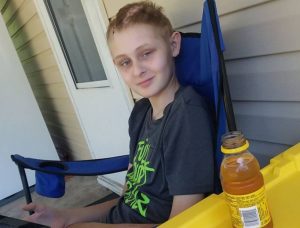 E. Christian Brugger
E. Christian Brugger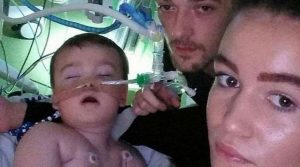
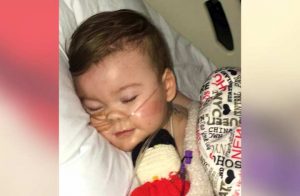 It’s been a titanic battle – UK’s Alder Hey Children’s Hospital versus a helpless 23-month-old boy.
It’s been a titanic battle – UK’s Alder Hey Children’s Hospital versus a helpless 23-month-old boy. Oral contraceptives increase the risk of women suffering from certain types of stroke, new research suggests.
Oral contraceptives increase the risk of women suffering from certain types of stroke, new research suggests.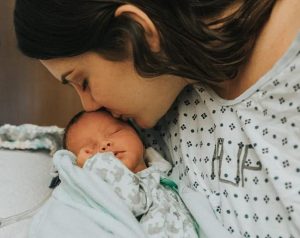 An amazingly brave teenager gave birth to a baby girl last week in Philadelphia while battling a deadly brain cancer.
An amazingly brave teenager gave birth to a baby girl last week in Philadelphia while battling a deadly brain cancer. LYON, France, October 2, 2017 (
LYON, France, October 2, 2017 ( A judge has ruled that the teenager, declared dead in California, may not be dead. From the East Bay Express story:
A judge has ruled that the teenager, declared dead in California, may not be dead. From the East Bay Express story:
 The dedication and legacy of a prodigious pro-life hero
The dedication and legacy of a prodigious pro-life hero MANCHESTER, England, April 27, 2016 (
MANCHESTER, England, April 27, 2016 (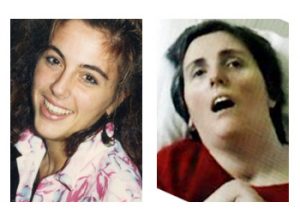

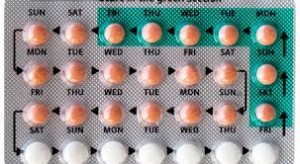

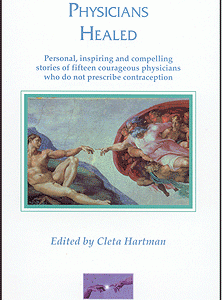
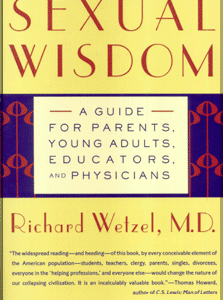
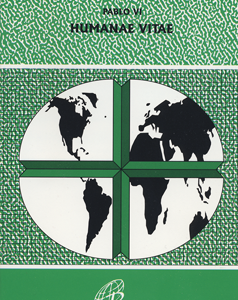
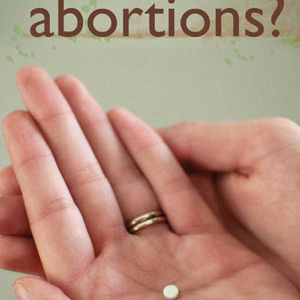

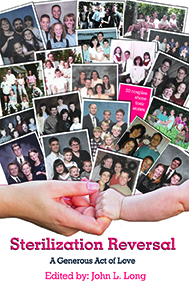
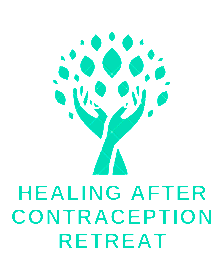
Astonishing: 20% of people thought to be in vegetative state are not
By Nancy Flanders
Dr. Adrian Owen, the author of Into the Gray Zone, is a neuroscientist who has been studying how people who are thought to be unaware — often because they cannot answer commands such as “squeeze my hand” — are actually very aware. He asked the question, “could somebody command follow with their brain?”
READ: Man awakens from 12-year-long coma
By scanning the brains of conscious individuals and asking them yes or no questions, he took note of the areas of their brains that were activated with blood flow. Rather than answer yes or no, these healthy individuals were asked to think of playing a game of tennis if the answer to the question was yes and to think of moving through their own home if the answer was no. Each of those thoughts uses a different part of the brain and doctors could watch which part became activated when asking the questions.
Then Owen tried this with hundreds of people thought to be unresponsive and vegetative. What he found was astonishing. An astounding one in five people who were unable to physically respond to command prompts in the past were able to respond to them with their brains, proving that they were not unresponsive or unaware as previously believed.
“What we’re doing is returning the ability to communicate to some patients who seem to have lost that forever,” said Owen. “[…] I can still remember exactly what it felt like the first time we saw a patient that we thought was in a vegetative state activate their brain in the scanner. The patient’s name was Kate. Nobody would have predicted that we would have seen brain activity in response to asking a patient to do something and when we first saw it it was absolutely astonishing. Before we made that discovery, nobody bothered to look at any of these patients.”
What he discovered will change the way doctors and family members treat people who are living like Terri Schiavo did. Rather than pass them off as people who are unable to live or unworthy of living and assuming these people would rather die and then starving them to death, doctors will actually be able to ask people how they feel, if they are in pain, and what they want for their lives. They will no longer be locked inside their minds, forced to watch as well-meaning doctors and family members make life or death decisions for them. They will no longer have to sit in pain unable to express it. And the lives of people around the world who are currently written off as “vegetative” will be opened to a whole new way of living. Because that’s what they have always been – living human beings worthy of the best that medical care and love can give them.
Posted in Brain Death, News & Commentary, Pro-life issues | No Comments »